Menu
Sudden Sensorineural Hearing Loss (SSNHL) Frequently Asked Questions (FAQs)
What Is Causing the Problem?
How Is Sudden Hearing Loss Diagnosed?
The sudden loss in hearing occurs within a three-day period and is obvious to you. You may also have loud ringing, dizziness, and/or pressure in the ear. You should see a healthcare provider as soon as possible if you have any of these symptoms. Your healthcare provider will complete a physical examination and review your medical history. A hearing test (audiogram) should be obtained by your healthcare provider but other routine lab tests and X-rays are not usually recommended.
Will My Hearing Come Back?
Approximately half of patients with SSNHL recover at least some hearing without treatment. Patients with mild to moderate to severe hearing loss are considered in the “steroid-effective zone” and have a high chance—over 75 to 80 percent—of recovery with steroid therapy. The earlier that treatment is begun, the better the chances for recovery. Patients with profound hearing loss, which is a complete loss of hearing, patients who experience dizziness (vertigo) with their sudden hearing loss, and individuals above age 65 have a much lower chance of getting their hearing back. In those cases, you and your healthcare provider should discuss aggressive treatments to try to bring your hearing back. Hearing can take up to six weeks or more to return, after treatment is finished.
Is There Additional Testing Needed with SSNHL?
Once in a while (less than one percent of the time) SSNHL is due to a benign (non-cancerous) tumor on the nerve that connects the ear to the brain. These tumors are called “vestibular schwannomas.” Your healthcare provider may order a magnetic resonance imaging (MRI) scan to look for this tumor if an MRI is safe for you. Another option is a type of hearing test called Auditory Brainstem Response (ABR). However, if the ABR is abnormal, your healthcare provider should recommend an MRI.
How is Sudden Hearing Loss Treated?
There are many treatments for SSNHL. Watchful waiting may be recommended. This is because half of patients may get back hearing on their own—these are usually patients with mild to moderate degrees of hearing loss, but healthcare providers do not currently have a way to predict who will get better without treatment. Initial treatment should be given within two weeks and can include steroids in pill form or injected into the ear directly (intratympanic steroid injections), or hyperbaric (pronounced hi-per-bar-ik) oxygen therapy (HBOT) given with steroids. If the first treatments do not work, your otolaryngologist should discuss “salvage therapy.” You may be offered HBOT with steroids, but your healthcare provider should recommend intratympanic steroid injections through the eardrum. The benefits of therapy may include more quick and complete recovery of hearing, but there are also side effects that must be considered when choosing from the available options.
What Are the Side Effects of Each Treatment?
Side effects are different with each type of treatment but may include anxiety, pain, dizziness, high blood sugar, high blood pressure, depression, or sleep problems. In head-to-head comparisons, intratympanic injection of steroids causes much fewer side effects than oral steroids. You should talk to your healthcare provider about side effects from any treatment that you are considering.
What Else Can I Expect?
Sudden hearing loss can be frightening and may make you feel embarrassed, frustrated, worried, lonely, and even depressed. Talking with a counselor can be helpful. If you have tinnitus (ringing in the ear), it is usually loud and awful at the beginning, but reduces significantly over the first several months and if the hearing comes back up. If you do not experience full hearing recovery, you may want to talk to your otolaryngologist and audiologist about hearing aids or other devices you can use to make hearing easier. You should get a follow-up hearing test (audiometry) within six months of your first visit with SSNHL.
Source
Chandrasekhar SS, Tsai Do BS, Schwartz SR, et al. Clinical Practice Guideline: Sudden Hearing Loss (Update). Otolaryngol Head Neck Surg. 2019;161 (1_Suppl):[S1-S45].
Related Conditions
The information on ENThealth.org is provided solely for educational purposes and does not represent medical advice, nor is it a substitute for seeking professional medical care.
Copyright 2024. American Academy of Otolaryngology–Head and Neck Surgery Foundation

